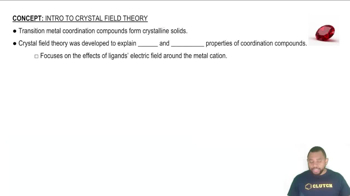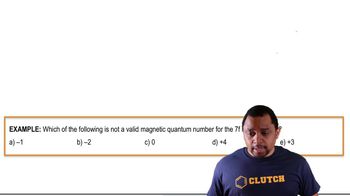Here are the essential concepts you must grasp in order to answer the question correctly.
Electronic Configuration
Electronic configuration describes the distribution of electrons in an atom's orbitals. For cobalt (Co), which has an atomic number of 27, the ground state electronic configuration is [Ar] 3d7 4s2. When cobalt forms a 3+ ion, it loses three electrons, typically from the 4s and 3d orbitals, resulting in the configuration [Ar] 3d6.
Recommended video:
Electron Configuration Example
Crystal Field Theory
Crystal Field Theory (CFT) explains how the arrangement of ligands around a central metal ion affects the energy levels of its d orbitals. In an octahedral complex, the five d orbitals split into two energy levels: the lower-energy t2g (dxy, dyz, dzx) and the higher-energy eg (dx2-y2, dz2) orbitals. The extent of this splitting depends on the strength of the ligands, which can be classified as strong or weak field.
Recommended video:
The study of ligand-metal interactions helped to form Ligand Field Theory which combines CFT with MO Theory.
Unpaired Electrons and Magnetic Properties
The number of unpaired electrons in an atom or ion determines its magnetic properties. In the case of the Co3+ ion with a 3d6 configuration in a weak-field octahedral complex, the electrons will occupy the t2g orbitals first, leading to four unpaired electrons. This results in a paramagnetic behavior, as unpaired electrons contribute to the overall magnetic moment of the ion.
Recommended video:
 Verified step by step guidance
Verified step by step guidance

